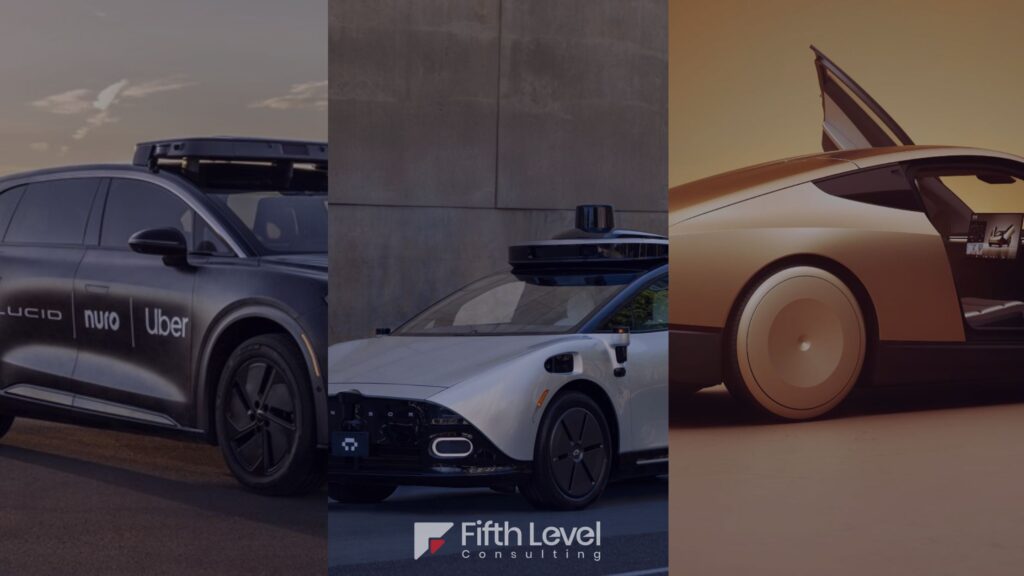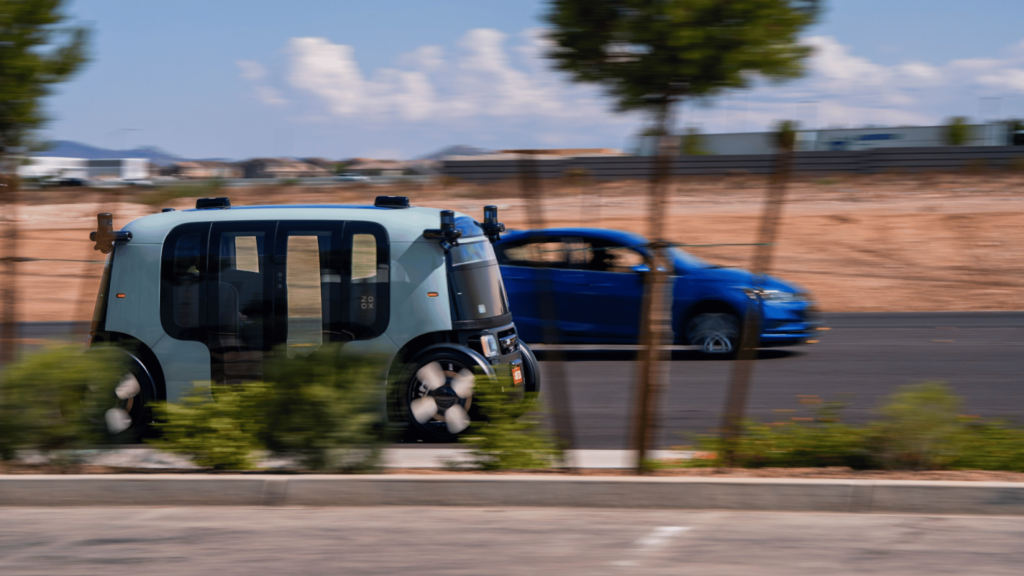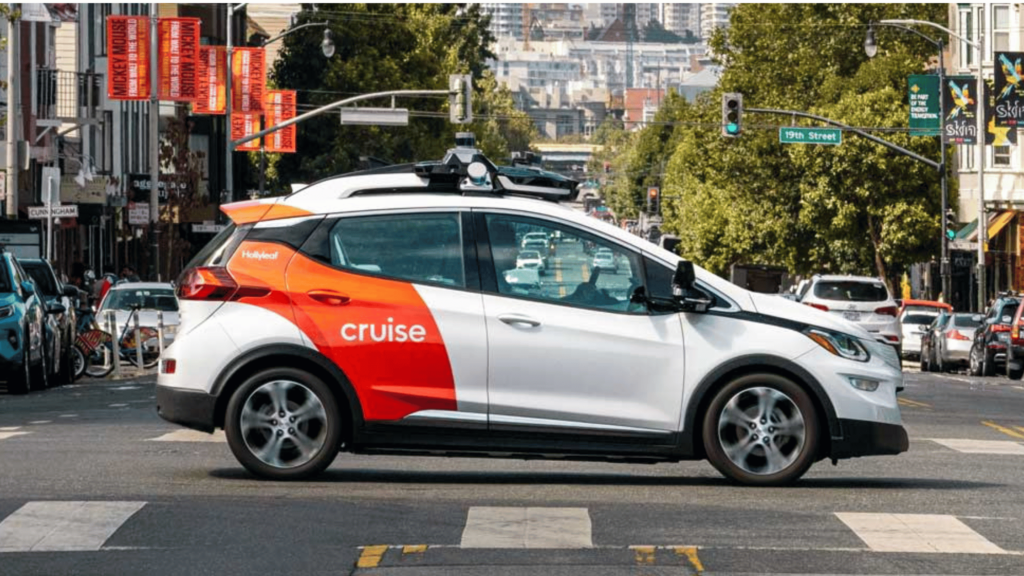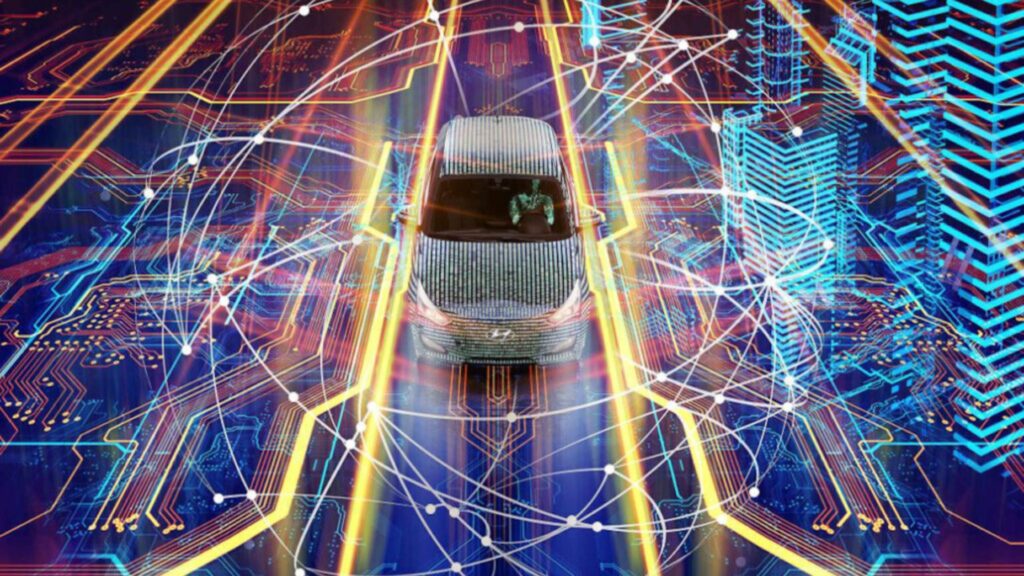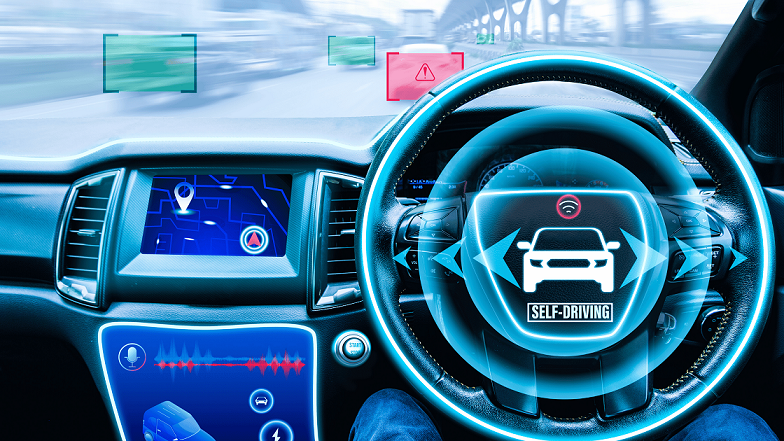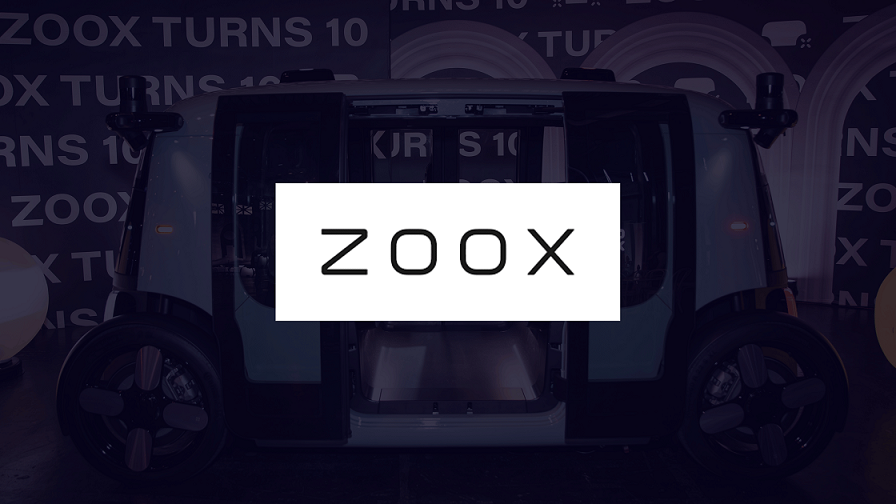If you’ve been thinking of owning a self-driving car, that might just become a reality in 2026. After years of development and testing, three groundbreaking Level 4 autonomous vehicles are set to disrupt personal transportation in the United States. These aren’t just concepts or fleet-only vehicles—they’re personal cars you can actually purchase and own.
Level 4 self-driving cars represent a big shift in automotive technology, offering hands-free driving in designated areas while maintaining the flexibility of manual control when needed.
What Makes a Level 4 Self-Driving Car Special?
Before diving into our top picks, it’s important to understand what sets Level 4 autonomy apart. According to the Society of Automotive Engineers (SAE), Level 4 vehicles can handle all driving tasks within specific operational design domains (ODD)—like highways or urban zones—without requiring human intervention. Unlike lower levels of automation, these cars can truly drive themselves, though they may still offer manual controls for areas outside their autonomous capabilities.
Now, let’s explore the most promising level 4 self-driving cars available to American consumers in 2026.
1. Tensor Robocar: The World’s First Personal Level 4 Autonomous Vehicle
The Tensor Robocar stands out as the world’s first Level 4 autonomous vehicle specifically designed for private ownership. This groundbreaking vehicle represents a complete departure from the ride-hailing focused autonomous vehicles we’ve seen from companies like Waymo and Tesla‘s fleet services.
Technical Specifications
The Tensor Robocar boasts an impressive array of technical features that make it a true technological marvel:
Sensor Suite:
- Over 100 integrated sensors for comprehensive environmental awareness
- 37 high-resolution cameras for 360-degree visual perception
- 5 LiDAR units for precise depth mapping in all lighting conditions
- 11 radar sensors for long-range object detection
- 22 microphones for voice commands and external sound analysis
- 10 ultrasonic sensors for close-range awareness
- 16 collision detectors to sense impact risks
- 8 water level sensors for flood detection
- 1 smoke detector for onboard safety
Computing Power:
- NVIDIA-powered supercomputer delivering approximately 8,000 TOPS (Trillion Operations Per Second)
- 10 GPUs with 144 cores for real-time processing
- Redundant safety systems for fail-safe operation
Charging and Connectivity:
- Ultra-fast 845V charging system with 5C capability
- 20-80% charging in approximately 10 minutes (manufacturer claim)
- Triple-channel 5G connectivity for ultra-fast, redundant data transmission
Unique Design Features
What truly sets the Tensor Robocar apart is its adaptive interior design. The vehicle features a revolutionary transformative cabin that seamlessly transitions between autonomous and manual driving modes:
- Retractable steering wheel that folds away during autonomous operation
- Retractable pedals that disappear when not needed
- Sliding touchscreen that moves between driver and passenger positions
- Lounge-like seating configuration for maximum comfort during autonomous travel
Privacy and Security
In an era of increasing data concerns, Tensor prioritizes user privacy with local data processing. All user information—including location data, driving patterns, and voice commands—is processed and stored locally on the vehicle rather than transmitted to remote servers. The system includes physical camera covers and microphone off switches, giving users tangible control over their privacy.
Availability and Pricing
The Tensor Robocar is manufactured in partnership with VinFast in Hai Phong and is targeted for delivery in the second half of 2026 across the United States, Europe, and UAE. While exact pricing hasn’t been announced, the sophisticated sensor suite and computing power suggest a premium price point reflecting its cutting-edge technology.
Tensor has secured $300 million in Series B funding from prestigious investors including Sequoia Capital and Andreessen Horowitz, validating the company’s potential to compete with industry giants.
2. Lucid Gravity
The Lucid Gravity represents a unique approach to Level 4 autonomy through a strategic partnership with autonomous technology company Nuro. This collaboration, backed by a significant investment from Uber, brings together three key elements: Lucid’s luxury electric vehicle expertise, Nuro’s proven autonomous driving technology, and Uber’s massive operational experience.
Technical Excellence
Vehicle Specifications:
- 450-mile EPA-estimated driving range
- Fully redundant zonal architecture designed for Level 3 autonomy, adaptable to Level 4
- Spacious SUV design ideal for family use and ridesharing
- Starting price of $94,900
- Premium luxury interior and materials
Autonomous Technology – Nuro Driver™:
- Level 4 autonomous system enabling operation without human intervention
- Automotive-grade hardware combined with AI-powered software
- Multi-sensor fusion using cameras, LiDAR, and radar
- Real-world testing experience from over 1.4 million autonomous miles with zero at-fault incidents
Manufacturing and Integration
Lucid integrates Nuro’s autonomous hardware—including LiDAR sensors, radars, and cameras—directly on its Arizona assembly line, ensuring seamless production and quality control. This integration approach represents a mature manufacturing strategy that leverages existing automotive production expertise.
Market Position and Financial Backing
The Gravity benefits from substantial financial support, with Uber investing $300 million in Lucid and planning to purchase at least 20,000 vehicles. This partnership provides Lucid with both capital and a guaranteed market, while giving consumers confidence in the vehicle’s long-term viability.
Key Advantages:
- Proven luxury vehicle platform from established manufacturer
- Battle-tested autonomous technology from Nuro’s extensive real-world experience
- Strong financial backing ensuring long-term support and development
- Premium materials and build quality expected from luxury brand
Availability
While initially planned for robotaxi deployment, the Lucid Gravity with Level 4 capabilities is expected to be available for private purchase in 2026, leveraging the same technology being deployed in Uber’s fleet.
3. Tesla Cybercab
The Tesla Cybercab represents the most radical approach to Level 4 autonomy, designed from the ground up as a fully autonomous vehicle with no traditional driving controls whatsoever. This two-passenger vehicle embodies Tesla’s vision of transportation as a service while still being available for private ownership.
Unique Features and Design
Interior Innovation:
- Complete absence of steering wheel and pedals
- Two-passenger seating configuration with maximized legroom
- 20.5-inch central touchscreen for entertainment and controls
- Gullwing doors for enhanced access and futuristic appeal
- Entertainment-focused cabin designed for passenger comfort
Autonomous Technology:
- Tesla’s Full Self-Driving (FSD) system upgraded to Level 4/5 capabilities
- Vision-only approach using extensive camera arrays
- End-to-end machine learning for real-time decision making
- Benefits from data collected across Tesla’s entire vehicle fleet
Innovative Charging Solution
The Cybercab features a groundbreaking inductive charging system that eliminates the need for traditional charging ports:
- Wireless charging by parking over specially designed charging pads
- Over 90% efficiency according to Tesla specifications
- 19 kW charging rate demonstrated at 35% state of charge
- No NACS port or plug-in connectors, reinforcing its autonomous design
Cost and Economics
Pricing Strategy:
- Targeted price below $30,000 (approximately $25,000)
- Operational cost of approximately $0.20 per mile
- Significantly lower than traditional transportation options
- Revenue generation potential through Tesla’s ride-hailing network
Tesla plans to allow Cybercab owners to generate income by offering rides through Tesla’s platform when their vehicles aren’t in use, with Tesla taking a 25-30% commission. This represents the first time an autonomous vehicle company has enabled individual ownership with monetization capabilities.
Production and Timeline
Tesla has announced ambitious production goals for the Cybercab:
- Volume production target: At least 2 million units annually by 2026
- Multiple factory strategy to distribute production capacity
- Commercial deployment expected to begin in 2026 following regulatory approval
Current Status
As of 2025, Tesla has demonstrated 20 Cybercab prototypes that successfully operated autonomously at the company’s unveiling event. Recent reports indicate the Cybercab has been spotted providing rides to Tesla employees at Gigafactory Texas, suggesting ongoing real-world testing.
Comparative Analysis: Which Level 4 Vehicle Is Right for You?
| Feature | Tensor Robocar | Lucid Gravity | Tesla Cybercab |
|---|---|---|---|
| Price Range | Premium (TBD) | $94,900+ | Under $30,000 (~$25,000) |
| Seating Capacity | Not specified | 7 passengers (SUV) | 2 passengers |
| Sensor Suite | 100+ sensors: 37 cameras, 5 LiDAR, 11 radar, 22 mics | Multi-sensor fusion: cameras, LiDAR, radar | Vision-only: 8+ cameras |
| Computing Power | ~8,000 TOPS, 10 GPUs, 144 cores | Nuro Driver™ system | Tesla FSD computer |
| Driving Modes | Dual-mode (autonomous + manual) | Level 4 autonomous with manual override | Fully autonomous only (no steering wheel) |
| Charging | 845V, 5C, 20-80% in ~10 min | Standard EV charging | Inductive charging (wireless) |
| Range | Not specified | 450 miles EPA-estimated | Not specified |
| Interior Design | Transformative with retractable controls | Luxury SUV appointments | Entertainment-focused, 20.5″ screen |
| Privacy Features | Local data processing, physical covers | Standard automotive privacy | Tesla data collection |
| Revenue Generation | Not specified | Potential through Uber partnership | Tesla ride-hailing network (25-30% commission) |
| Manufacturing Partner | VinFast | Lucid Motors (in-house) | Tesla (in-house) |
| Target Market | Tech enthusiasts, privacy-focused | Luxury SUV buyers, families | Cost-conscious, urban users |
| Delivery Timeline | H2 2026 | 2026 | 2026 |
| Unique Features | Maximum sensor redundancy, privacy focus | Proven luxury platform, 450-mile range | Lowest cost, revenue potential |
Regulatory Landscape
All three manufacturers must get regulatory permits from agencies including National Highway Traffic Safety Administration (NHTSA) for federal vehicle safety standards. Also, the California Department of Motor Vehicles and other state authorities for autonomous vehicle operations. Local jurisdictions for specific operational areas and conditions.
Conclusion
By 2026, autonomous vehicles will completely transform how we move, offering safety, convenience, and cutting-edge technology. Whether you buy the Tensor Robocar, the luxury-focused Lucid Gravity, or the Tesla Cybercab, you’ll be part of a revolution that promises to reshape how we think about personal mobility.
Level 4 autonomous vehicles are safer than human drivers, and are also more efficient.
The truth is, the new era of our transportation hinges on how quickly we embrace this remarkable technology.
Self-driving cars are here, and for the first time, you can own one.
You May Also Like:
6 Best Self-Driving Cars in the US (2025)
Top 5 Autonomous Trucking Companies in the US (2025)
Must-Read: Top 10 Autonomous Vehicle Trends (2025)
Ultimate Glossary of 100 Autonomous Vehicle Terms

I’m Dr. Brandial Bright, also known as the AVangelist. As a dedicated and passionate researcher in autonomous and electric vehicles (AVs and EVs), my mission is to educate and raise awareness within the automotive industry. As the Founder and Managing Partner of Fifth Level Consulting, I promote the adoption and innovation of advanced vehicle technologies through speaking engagements, consulting, and research as we progress to level 5 fully autonomous vehicles.

